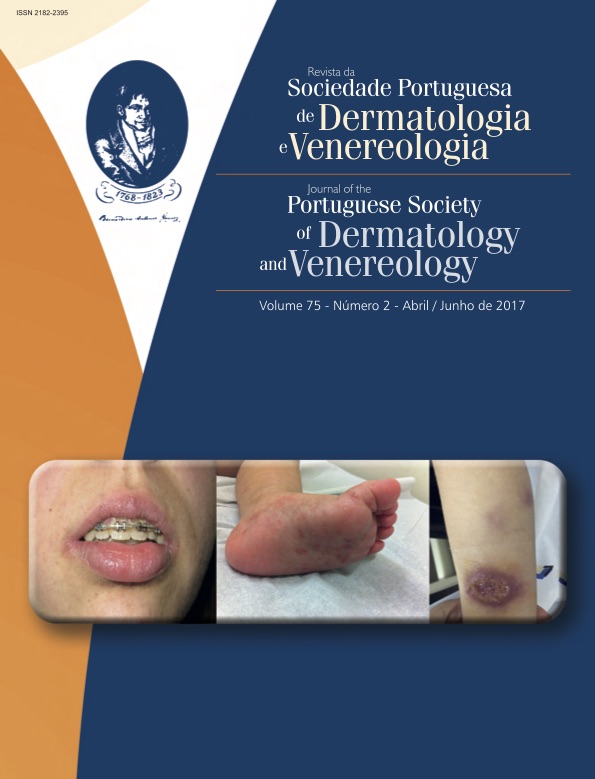Reações Cutâneas de Hipersensibilidade Retardada a Medicamentos: Serão os Testes Epicutâneos Positivos Persistentes?
Resumo
Introdução: Tal como na dermatite de contacto alérgica, nas reações adversas medicamentosas cutâneas (RAMc) retardadas a hipersensibilidade é considerada permanente. No entanto, enquanto na dermatite de contacto alérgica os testes epicutâneos permanecem positivos por longos períodos de tempo, isto tem sido pouco estudado nas RAMc retardadas medicamentos sistémicos.
Objetivo: Avaliar, a longo prazo, a persistência das reações positivas dos testes epicutâneos nas RAMc retardadas a antibióticos betalactâmicos, à clindamicina e à carbamazepina. Métodos: Foram selecionados os medicamentos com maior número de reações positivas em testes epicutâneos (betalactâmicos, clindamicina e carbamazepina) e 64 doentes com história de RAMc retardadas com testes positivos a estes fármacos foram convidados a repetir os testes, pelo menos 2 anos depois dos primeiros. As reações dos novos testes foram comparadas com as dos testes originais.
Resultados: Nos 23 doentes que aceitaram participar (10 homens/13 mulheres, idade mediana 51 anos) foram observadas 44 reações positivas nos testes iniciais e 40 (91,1%) destas mantiveram-se positivas, após uma mediana de 6,5 anos (min. 2,0 – máx. 30,7 anos). Relativamente aos betalactâmicos, 17/19 reações permaneceram positivas com aminopenicilinas (amoxicilina ou ampicilina), 8/8 com isoxazolilpenicilinas (flucloxacilina ou dicloxacilina), 3/3 com benzilpenicilina, 1/1 cefoxitina e 1/1 com piperacilina. Os testes com clindamicina mantiveram-se positivos em 5/7 ocasiões. Todos os cinco testes repetidos com carbamazepina foram positivos. Em 62,5% das reações observou-se a mesma intensidade da reação original, não sendo esta afetada pelo tempo decorrido entre os testes, pela idade ou género dos doentes.
Conclusão: Nas RAMc retardadas a vários antibióticos e à carbamazepina, a maioria das reações dos testes epicutâneos permaneceu positiva, após vários anos.
Downloads
Todos os artigos desta revista são de acesso aberto sob a licença internacional Creative Commons Attribution-NonCommercial 4.0 (CC BY-NC 4.0).








